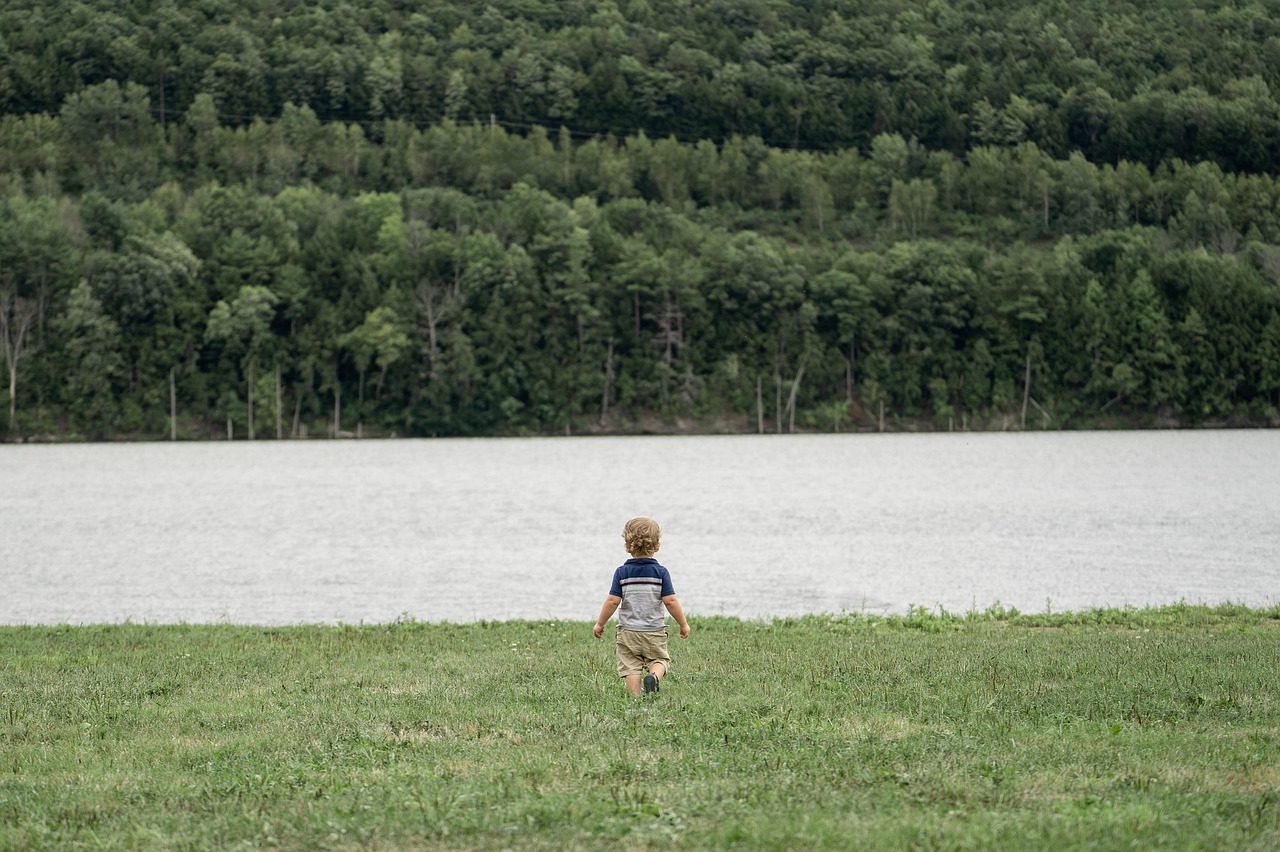Guiding children’s behavior effectively is a cornerstone of fostering their social-emotional development and setting them up for success in life. It’s more than just discipline; it’s about teaching, coaching, and building positive relationships. This involves understanding the reasons behind behaviors, offering constructive support, and creating environments that encourage positive interactions. Whether you’re a parent, teacher, caregiver, or anyone working with children, mastering behavior guidance techniques can transform challenging situations into valuable learning opportunities. This guide will delve into key strategies and practical tips to help you navigate the complexities of guiding children’s behavior.
Understanding the Roots of Behavior
Decoding the Message: Why Children Behave the Way They Do
Behavior is communication. Often, children’s actions, especially those that seem challenging, are attempts to express needs, feelings, or unmet expectations. Before reacting to a behavior, try to understand its underlying cause.
- Unmet Needs: Children might act out because they’re hungry, tired, or feeling unwell.
- Seeking Attention: Negative attention is still attention. A child might misbehave to get noticed, even if it leads to reprimand.
- Lack of Skills: Some behaviors stem from a lack of social or emotional skills. For example, a child who grabs toys may not know how to ask for them appropriately.
- Environmental Factors: Overstimulation, confusing routines, or inconsistent rules can contribute to challenging behaviors.
- Emotional Regulation: Difficulty managing emotions like frustration, anger, or anxiety can lead to outbursts or withdrawal.
- Example: A child who constantly interrupts during story time might be seeking attention because they feel unseen. Instead of simply scolding them, try acknowledging their presence and involving them in the story in a positive way, such as asking them to point to objects or characters.
The Importance of Positive Relationships
A strong, positive relationship is the foundation of effective behavior guidance. Children are more likely to cooperate and internalize expectations when they feel safe, valued, and understood.
- Build Trust: Spend quality time with children, listen to their concerns, and show genuine interest in their lives.
- Show Empathy: Acknowledge their feelings, even if you don’t agree with their behavior. “I understand you’re frustrated that you can’t play with that toy right now.”
- Be Consistent: Establish clear expectations and follow through with consequences consistently. Consistency creates a sense of predictability and security.
- Focus on Strengths: Highlight children’s positive qualities and accomplishments. This builds their self-esteem and encourages positive behaviors.
Proactive Strategies for Positive Behavior
Creating a Supportive Environment
Preventing challenging behaviors is often more effective than reacting to them. Creating a positive and supportive environment can significantly reduce the likelihood of misbehavior.
- Establish Clear Rules and Expectations: Involve children in creating rules so they feel ownership and understanding. Rules should be age-appropriate and clearly communicated.
- Develop Predictable Routines: Routines provide structure and security. Children thrive when they know what to expect.
- Provide Choices: Offering choices, within reasonable limits, gives children a sense of control and reduces power struggles. “Would you like to wear the blue shirt or the red shirt?”
- Design Engaging Activities: Boredom can lead to misbehavior. Provide stimulating and age-appropriate activities that capture children’s interest.
- Example: Implement a visual schedule in a classroom or at home to help children anticipate upcoming activities and transitions. This can reduce anxiety and resistance.
Teaching Social-Emotional Skills
Equipping children with social-emotional skills empowers them to manage their emotions, resolve conflicts, and navigate social situations effectively.
- Model Positive Behavior: Children learn by observing the adults around them. Demonstrate empathy, respect, and problem-solving skills in your own interactions.
- Teach Emotional Literacy: Help children identify and name their emotions. Provide them with vocabulary to express how they’re feeling.
- Promote Conflict Resolution Skills: Teach children how to communicate their needs assertively, listen to others’ perspectives, and find mutually agreeable solutions.
- Foster Empathy: Encourage children to consider the feelings of others. Discuss how their actions might impact others.
- Actionable Takeaway: Dedicate a few minutes each day to discuss emotions with children. Read books about emotions, play games that involve identifying feelings, or simply ask them to share how they’re feeling.
Responding to Challenging Behaviors
Positive Reinforcement Techniques
Reinforcing positive behaviors is more effective than solely focusing on punishing negative ones. It encourages children to repeat desirable actions and strengthens positive relationships.
- Verbal Praise: Offer specific and genuine praise when children exhibit positive behaviors. “I appreciate how you shared your toys with your sister.”
- Tangible Rewards: Use tangible rewards, such as stickers, small toys, or extra playtime, to motivate children to achieve goals or exhibit specific behaviors. Use these sparingly and pair them with verbal praise.
- Token Economy: Implement a token economy system where children earn tokens for positive behaviors and can exchange them for desired rewards.
- Privileges: Offer privileges, such as choosing a family movie or having extra screen time, as rewards for consistent positive behavior.
Effective Discipline Strategies
When discipline is necessary, it should be delivered calmly, consistently, and with the goal of teaching rather than punishing.
- Redirection: Gently guide children away from undesirable behaviors and towards more appropriate activities.
- Time-Out: Use time-out as a cooling-off period for both the child and the adult. Ensure the time-out area is safe and calm, and that the duration is age-appropriate (e.g., one minute per year of age).
- Logical Consequences: Implement consequences that are directly related to the behavior. For example, if a child throws toys, they lose access to those toys for a period of time.
- Problem-Solving: After the child has calmed down, engage them in problem-solving to discuss the behavior, its consequences, and alternative ways to handle the situation in the future.
- Important Consideration: Avoid physical punishment, yelling, and shaming, as these methods can be harmful and ineffective in the long run.
Adapting Behavior Guidance for Different Ages and Needs
Tailoring Strategies for Toddlers
Toddlers are still developing their language skills and emotional regulation abilities. Their behaviors are often driven by curiosity, exploration, and a need for independence.
- Focus on Prevention: Create a safe and stimulating environment to minimize opportunities for misbehavior.
- Use Simple Language: Communicate expectations clearly and simply, using age-appropriate language.
- Offer Choices: Give toddlers choices to foster a sense of control.
- Redirect Frequently: Gently redirect toddlers from undesirable behaviors to more appropriate activities.
Addressing the Needs of Older Children and Adolescents
Older children and adolescents require different behavior guidance strategies that focus on autonomy, responsibility, and problem-solving.
- Involve Them in Decision-Making: Include older children in setting rules and consequences to foster a sense of ownership and responsibility.
- Encourage Independence: Provide opportunities for older children to make their own choices and take responsibility for their actions.
- Use Logical Consequences: Implement consequences that are directly related to the behavior and that help them learn from their mistakes.
- Focus on Problem-Solving: Engage older children in problem-solving to discuss challenges, generate solutions, and make informed decisions.
- Open Communication: Maintain open and honest communication to foster trust and understanding.
Accommodating Children with Special Needs
Children with special needs may require individualized behavior guidance strategies that address their specific challenges and support their unique strengths.
- Understand Individual Needs: Collaborate with parents, teachers, and specialists to understand the child’s specific needs and challenges.
- Modify Expectations: Adjust expectations and adapt activities to accommodate the child’s abilities and limitations.
- Provide Visual Supports: Use visual aids, such as pictures or schedules, to help children understand expectations and routines.
- Teach Social Skills: Explicitly teach social skills and provide opportunities for children to practice them in structured settings.
- Use Positive Reinforcement: Focus on reinforcing positive behaviors and celebrating successes.
Conclusion
Effective behavior guidance is an ongoing process that requires patience, understanding, and a commitment to building positive relationships with children. By understanding the roots of behavior, implementing proactive strategies, and responding to challenging behaviors with empathy and consistency, you can create environments that foster children’s social-emotional development and set them up for success. Remember to adapt your approach to suit each child’s unique needs and developmental stage, and to celebrate their progress along the way. The journey of guiding children’s behavior is not always easy, but the rewards – healthy relationships, responsible individuals, and a more harmonious environment – are well worth the effort.



